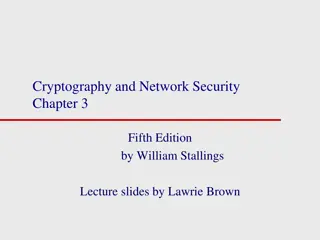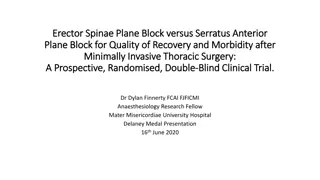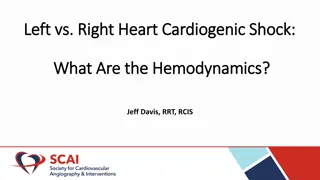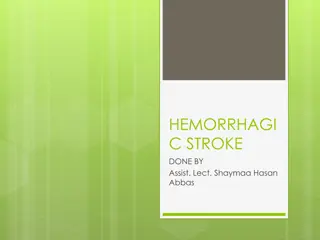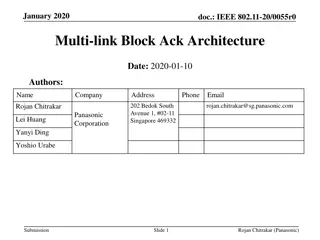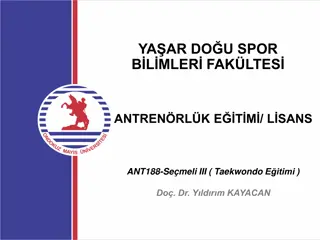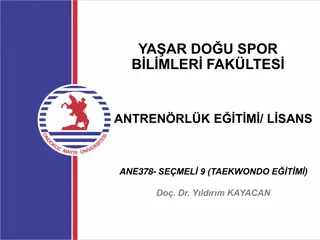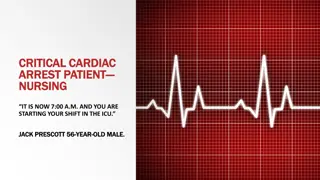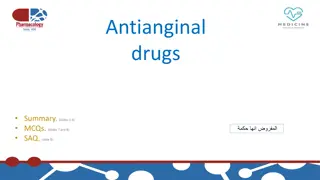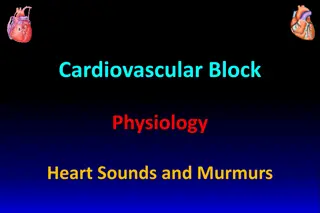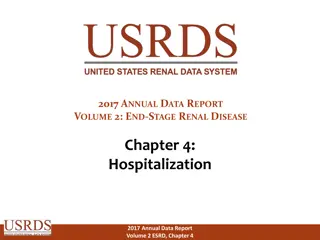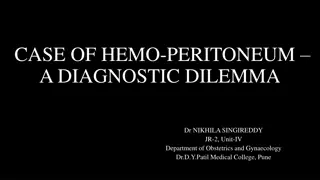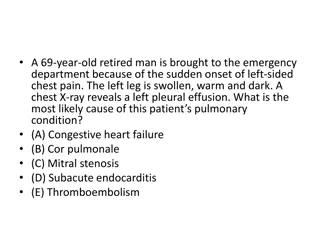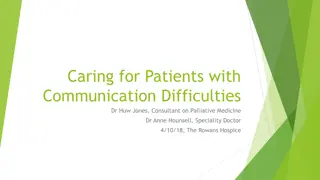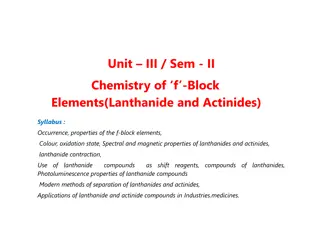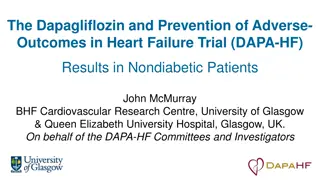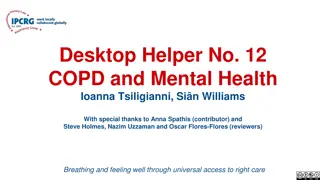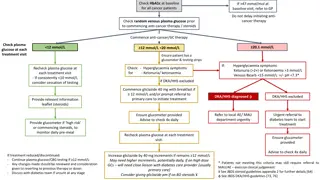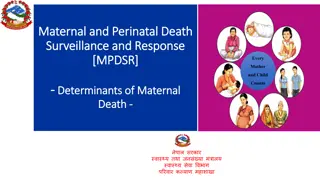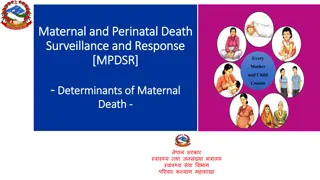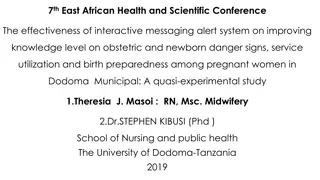Managing Hemodynamic Changes After Subarachnoid Block in Obstetric Patients: Exploring Zofran's Potential
Explore the potential of using Zofran to address hypotension and bradycardia following subarachnoid block in obstetric patients. The discussion covers physiological effects, reflexes, serotonin receptors, Zofran pharmacology, literature review on its efficacy, dosing recommendations, and concerns about fetal outcomes.
Uploaded on Sep 12, 2024 | 0 Views
Download Presentation

Please find below an Image/Link to download the presentation.
The content on the website is provided AS IS for your information and personal use only. It may not be sold, licensed, or shared on other websites without obtaining consent from the author. Download presentation by click this link. If you encounter any issues during the download, it is possible that the publisher has removed the file from their server.
E N D
Presentation Transcript
Reducing Hypotension and Bradycardia after a Subarachnoid Block in the Obstetric Population: Is Zofran the Answer? Lauren Tennis, BSN, RN, SRNA York College of Pennsylvania
Objectives Review of SAB and the physiologic effects Discuss the role of important reflexes Review serotonin and the 5-HT3 receptor Review pharmacology of Zofran Appraise literature on the use of Zofran to attenuate hypotension and bradycardia Evaluate what the literature says on recommended dosing Discuss areas of concern: Zofran and adverse fetal outcomes
Subarachnoid Blocks A- Class A- A- A- B C Function Motor Light Touch, Pressure & Pain Proprioception Temp & Pain Autonomic Pain & Pressure Muscle Spindles Myelin +++ ++ ++ ++ + - Diameter ( m) 12-20 5-12 5-12 1-4 1-3 0.5-1 Conduction Speed (m/sec) 70-120 30 - 70 30 - 70 12 - 30 15 1.2 Block Progression Last First SNS blockade exceeds sensory dermatome by about 2 dermatomes. Motor blockade is about 2 dermatomes below the sensory blockade.
Physiologic Effects of SAB Respiratory Paralysis of intercostal and abdominal muscles Phrenic nerve usually preserved Neural Blocks C fiber A fibers Sympathetic > Temperature > sensory > motor Gastrointestinal Nausea and Vomiting Decreased hepatic blood flow Cardiovascular Block cardio-accelerator fibers Dilation of arteries and venous capacitance vessels
Why do we have hypotension & bradycardia after SAB? Sympathetic blockade Activation of the Bezold-Jarisch Reflex Activation of baroreceptors Blockade of cardio-accelerator fibers T1-T4 Unopposed parasympathetic nervous system
Sympathetic Blockade Sympathetic chain located in thoracolumbar region Efferent stimulus from spinal cord in blocked and unable to transmit through sympathetic ganglion Inability to vasoconstrict and increase HR
Bezold-Jarisch Reflex Inhibitory reflex Mechanoreceptors detect low volume and decreased stretch Chemoreceptors sense increased levels of serotonin Heart attempts to compensate by hypercontracting the LV Afferent vagal nerve endings in LV send signal to NTS of brain Brain sends out parasympathetic signals via vagus nerve and slows HR and causes vasodilation
Baroreceptor Activation Low Volume Heart Rate Decreased
Blockade of Cardio-accelerator Fibers Originate from T1-T4 from the stellate sympathetic ganglion SAB at T4 level blocks sympathetic output to heart Unopposed parasympathetic system causes bradycardia
Ways to Treat Hypotension and Bradycardia IV Fluids Vasoactive medications Head down position Zofran?
Ondansetron (Zofran) 5-HT3receptor antagonist Works peripherally (GI tract) and centrally (chemoreceptor trigger zone) Dosing: 2-8mg Onset: 3-5min (IV) Half-life: 3-6 hours Metabolized by the liver Common routes of administration: PO, IV FDA Category B
Serotonin Excitatory and inhibitory neurotransmitter Located in Enterochromaffin cells 90% peristalsis, N/V, diarrhea Platelets 8-10% local vasoconstriction CNS 1-2% mood, appetite, pain, sleep Receptors are both metabotropic and ionotropic
5-HT3 Receptor Ligand-gated ion channel Structurally similar to nAch receptor Located in CNS, blood vessels, GI tract, afferent vagal nerve endings
Zofran and the Bezold-Jarisch Reflex Sympathectomy from SAB Bradycardia, vasodilation and N/V Decreased blood volume and blood flow Reduced vasodilation, bradycardia, and N/V Parasympathetic outflow Release of serotonin from platelets and enterochromaffin cells Increased serotonin levels bind to the afferent vagal nerve endings stimulating the BJR and N/V Less parasympathetic outflow Zofran: 5-HT3 Antagonist No transmission of vagal afferents and block CTZ
240 mcg Max Dose of Phenylephrine Use 209 mcg 106 mcg 125 mcg 195 mcg
Dosing Recommendations 1/3 of Group 04 and Group 06 experienced hypotension 40-60% of Group S, Group 02, and Group 08 experienced hypotension 4mg and 6mg of Zofran is adequate
Dosing Recommendations 6mg vs 12 mg vs control group (NSS) Control MAPs < Zofran group MAPs Control required Ephredrine for hypotension and Atropine for bradycardia No significant difference between 6mg and 12mg Zofran
Zofran and Neonatal Outcomes Category B Clinical trials had no effect on birth malformations APGAR scores 7-10 PO Zofran safe: no difference in spontaneous abortions, stillbirths, premature births, malformations, or low birth weight
Summary Hypotension and bradycardia are common physiologic changes after a SAB Zofran reduces hypotension by blocking the BJR and decreasing parasympathetic outflow No significant change in bradycardia 4-8mg is adequate No evidence of adverse outcomes in neonates
References Aviado, D. M., & Guevara Aviado, D. (2001). The Bezold-Jarisch reflex. A historical perspective of cardiopulmonary reflexes. Annals Of The New York Academy Of Sciences, 94048-58. Einarson, A., Maltepe, C., Navioz, Y., Kennedy, D., Tan, M. P., & Koren, G. (2004). The safety of ondansetron for nausea and vomiting of pregnancy: a prospective comparative study. BJOG: An International Journal Of Obstetrics And Gynaecology, 111(9), 940-943 Kinsella, S. M., & Tuckey, J. P. (n.d). Perioperative bradycardia and asystole: Relationship to vasovagal syncope and the Bezold-Jarisch reflex. British Journal Of Anaesthesia, 86(6), 859-868. Marashi, S. M., Soltani-Omid, S., Soltani Mohammadi, S., Aghajani, Y., & Movafegh, A. (2014). Comparing Two Different Doses of Intravenous Ondansetron With Placebo on Attenuation of Spinal-induced Hypotension and Shivering. Anesthesiology And Pain Medicine, 4(2), e12055. doi:10.5812/aapm.12055 Maricq, A. V., Peterson, A. S., Brake, A. J., Myers, R. M., & Julius, D. (1991). Primary structure and functional expression of the 5HT3 receptor, a serotonin-gated ion channel. Science (New York, N.Y.), 254(5030), 432-437. Mark, A. L. (1983). The Bezold-Jarisch reflex revisited: clinical implications of inhibitory reflexes originating in the heart. Journal Of The American College Of Cardiology, 1(1), 90-102. Miller, R.D. (2010). Miller s Anesthesia (7th edition). Philadelphia, PA. Nagelhout, J. & Zaglaniczny, K. (2014). Nurse Anesthesia (5th edition). WB Saunders.
References Owczuk, R., Wenski, W., Polak-Krzeminska, A., Twardowski, P., Arszu owicz, R., Dylczyk-Sommer, A., & ... Wujtewicz, M. (2008). Ondansetron given intravenously attenuates arterial blood pressure drop due to spinal anesthesia: a double-blind, placebo-controlled study. Regional Anesthesia And Pain Medicine, 33(4), 332-339. doi:10.1016/j.rapm.2008.01.010 Pasternak, B., Svanstr m, H., & Hviid, A. (2013). Ondansetron in pregnancy and risk of adverse fetal outcomes. New England Journal of Medicine, 368(9), 814-823. Priestley, P. C. (1981). Serotonin and anesthesia. AANA Journal, 49(5), 511-515. Reeves, D. C., & Lummis, S. R. (n.d). The molecular basis of the structure and function of the 5-HT3 receptor: A model ligand-gated ion channel (Review). Molecular Membrane Biology, 19(1), 11-26. Sahoo, T., SenDasgupta, C., Goswami, A., & Hazra, A. (2012). Reduction in spinal-induced hypotension with ondansetron in parturients undergoing caesarean section: a double-blind randomised, placebo-controlled study. International Journal Of Obstetric Anesthesia, 21(1), 24-28. doi:10.1016/j.ijoa.2011.08.002 Sevoz, C., Nosjean, A., Callera, J., Machado, B., Hamon, M., & Laguzzi, R. (1996). Stimulation of 5-HT-3 receptors in the NTS inhibits the cardiac Bezold-Jarisch reflex response. American Journal Of Physiology, 271(1 PART 2), H80-H87. Wang, M., Zhuo, L., Wang, Q., Shen, M., Yu, Y., Yu, J., & Wang, Z. (2014). Efficacy of prophylactic intravenous ondansetron on the prevention of hypotension during cesarean delivery: a dose-dependent study. International Journal Of Clinical And Experimental Medicine, 7(12), 5210-5216. Wang, Q., Zhuo, L., Shen, M., Yu, Y., Yu, J., & Wang, M. (n.d). Ondansetron Preloading with Crystalloid Infusion Reduces Maternal Hypotension during Cesarean Delivery. American Journal Of Perinatology, 31(10), 913-921.




